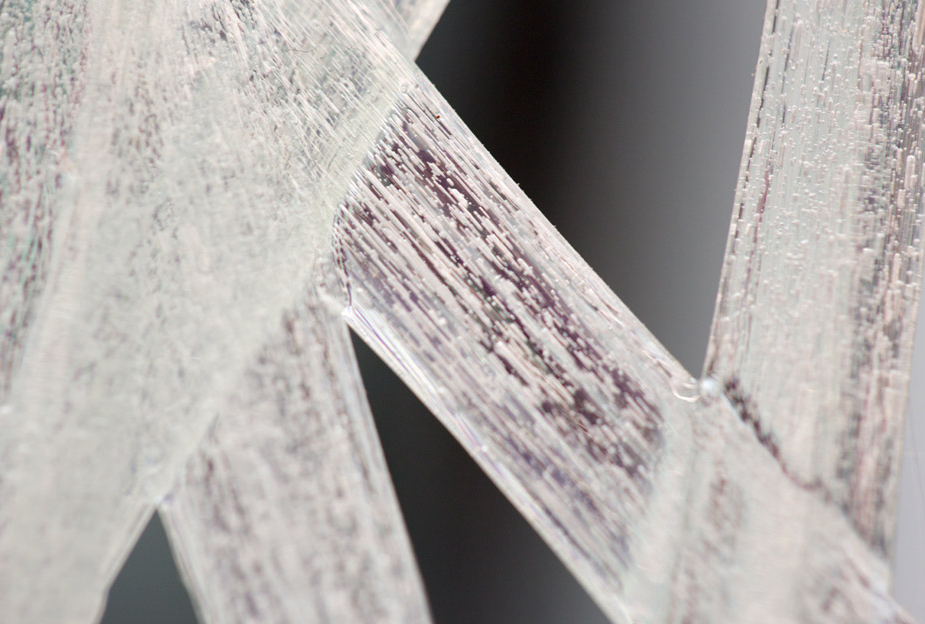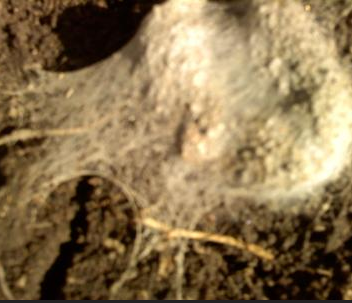Knetherwebbing
One of the strangest discoveries we have uncovered was that creatures that have invaded our planet brought some new and exciting technologies. The problem is that you must avoid dying in acquiring them. For example, webbing from a giant arachnid beast has incredible properties for cloth and fabrics. The photo capture above is a rare Queen Arachnid. Harvest her webbing to produce impact and fire-resistant woven materials reliably. Her offsprings webs decay over a week if not harvested and preserved correctly, but the final woven products are suitable for everyday usage.
Properties
Material Characteristics
Upon close inspection, the fibers are extremely intricate and interlock with each other in a reinforcing mesh pattern. If you gently pull or provide tension, the fibers constrict upon each other, demonstrating the resiliency of the product. The marvelous webbing gives the "bend but not break" feature, which is important in our cloth. It would require double or triple the force to tear an entwined Knetherwebbed fabric versus normal wool or cotton fibers. The fibers are a natural white or silver, but dyeing a different color does not to affect its properties.
Physical & Chemical Properties
The Knetherwebbing has bonding qualities that entrap fibers of all types. Wool and cotton fibers entwine with it quickly, but if you do not denature the sticky adhesive chemicals, you will be unable to work the material at all.
Compounds
The biological adhesive is quite active in the Knetherwebbing. You must protect your hands or procure the web material with stainless steel. Most harvesters will forge a mace or scepter of steel and wad the webbing around it like old cotton candy. The ball of the strap can denature the adhesive with a 1:20 vinegar-water solution for no more than 2 hours. Any longer and the tensile strength properties weaken.
Geology & Geography

Arachnidia by alberti
Do not fall for the damsel in distress tactic! Many foolish people lost their lives to a crying call of a women "trapped" in forest webbing!
The art of gathering Knetherwebbing is not for the meek. If your village compound has discovered an appropriate nest of Arachnids, it is best to venture there at dawn. Usually, the beasts are night hunters and rest during dawn hours, but hungry arachnids will be alerted and attack any time. Take a torch with you to scare off would-be predators and for by the Lords of Light do not go alone!
The caverns are dark, and surfaces can be treacherous to navigate. We think the arachnids instinctively choose smooth dark cavernous areas so inquisitive prey can fall into a hammock of death or make an escape to the surface problematic.
You will know you are near an arachnid lair if you fine web encased skat piled around the region. The frequency of webbing in surrounding areas is noticeable. No caterpillar nests will be seen to confuse you.
Life & Expiration
A Queens Knetherwebbing is the premium material you want. A mere 50% Knetherwebbed fabric can withstand fire like a water-soaked log. The strength and durability have lasted without fraying for more than 5 years. A pure Knetherwebbed cloth product is still in the works because of the sheer volume required to create a ball of cloth.
History & Usage
History
When a towel wore out, or clothing was widowed, smart village elders instruct us to not toss it away. Instead, create a rag for cleaning. Undershirts with holes make good dust rags, and any moth-eaten old bed linens can be torn and used for a lot of things. We converted them into rags or tie-ups for our tomato plants and even kite tails. Upon learning about Knetherwebbing, the products of created last longer, more durable to tearing and less likely to burn.
Discovery
Ancient archives tell us that the forefathers were already utilizing materials to create larger structures. They called it carbon nanofibers. The research on creating more of this stuff is hard to find, but Wizards do have similar sturdy fibers on their person. We have often wondered by bullets and projectiles have difficulty penetrating their skin, this revelation is leading us in the right direction.
Everyday use
Balls and Rugs
Most young weavers are trained to create rugs and balls with any fabric they can find. The Knetherwebbing is weaved with the strongest cloth strips to provide reinforcement. Any leftover webbing from a rug or blanket project is incorporated into weaving balls for future uses.
Distribution
Trade & Market
There is a greater need for Knetherwebbing because of its properties and danger in acquiring them. A fist-sized portion of pure Knetherwebbing fetches for 100 silver or 1 gold. Wizards who know about Knetherwebbing develop uneasy alliances for the material. Rumors claim humans fed to the Arachnids will endear the bloodthirsty creatures, so they permit harvesting of the webbing from their lair.
Storage
The balls of webbing are stored away from light and in cold areas or else the properties do decay quickly. Make sure you shake any unused portions before utilizing them. Insects will make homes in these balls over time.
Value
A fist sized ball is worth about 1 gold in most markets
Remove these ads. Join the Worldbuilders Guild












Comments